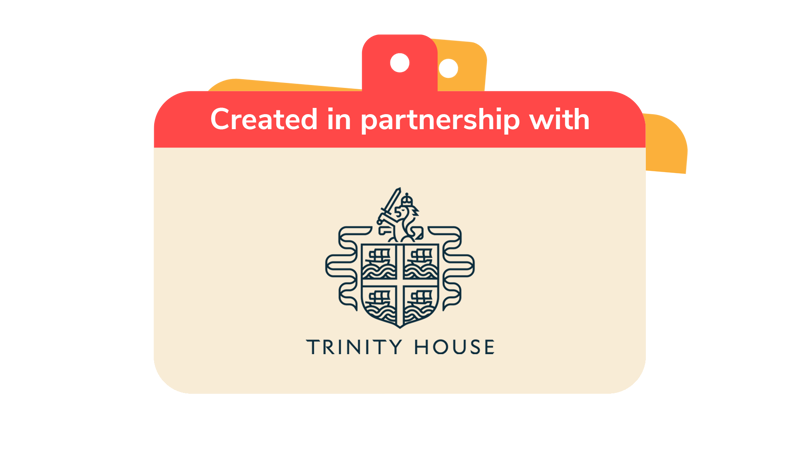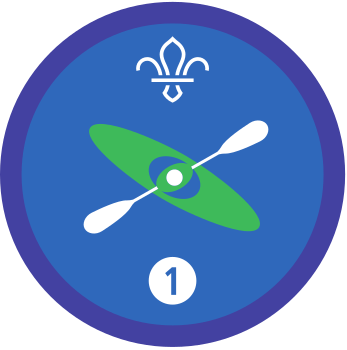
Prepare to paddle
You’ll need
- Paddle sports equipment
Before you begin
- Make sure to look at our guidance on Canoeing for safety and permit information and some handy hints.
- These instructions have been adapted from the British Canoeing Paddle Awards, which should be referred to for any further details.
- Getting ready. Safety is a top priority in all water activities and helping the group to understand what safety equipment they’ll need and what clothes to wear can help calm any nerves and encourage people to think more about safety.
- Clothing. Think about the types of clothing that’ll be suitable for the weather conditions. For example, lightweight fabrics, wind and waterproofs, and items that protect the wearer from the sun. Is everyone OK with their clothes getting wet or dirty? Are there any items of clothing that’d be more suitable than others? Are shoes and clothing secure enough that they won’t come off in the water? The right clothing is important to keep everyone warm and comfortable. If people are cold and uncomfortable, they won’t have a good time.
- Equipment. Understanding our equipment can help us to learn how to use it and make decisions for ourselves about what we need. Learning how to check equipment is a great skill too, as we can look for any damage or signs of wear and tear. Spotting these things early helps us keep our gear up to scratch. Before heading out on the water, speak with the person running this activity about what’ll be provided and what everyone will need to bring along. If people purchase their own equipment, make sure you discuss how to care for it, so that it’s protected from saltwater, the sun and incorrect storage.
- Getting on the water. This isn’t as simple as carrying a boat to the bank and hopping in. We need to think about keeping ourselves and the environment safe as we go.
- Safety. Choose the best way to move the boat. Do you need one person carrying or four? Where does the boat need to go? Are there any obstacles to watch out for?
- Access. Make sure you have permission to access the water. There are a variety of licences that may be required for your use of some bodies of water. Guidance is available in Canal and river licences.
- Environment. It’s important not to damage or destroy the environment as we launch, to make sure it’s sustained for others for years to come. We also need to think about the weather and the flow of the water. Will the wind or current push the boats away or is there a better place to launch?
- Make sure to read through our guidance on the classification of bodies of water.
- Remember, to achieve the Paddle Sports Stage 1, everyone needs to:
- Take part in a warm-up activity to prepare you for canoeing or kayaking. You could practise balancing while kneeling, getting in and out of a boat or try out a paddling action.
- Dress properly for your chosen activity.
- Show you know the importance of buoyancy aids and how to put one on correctly.
- Name the equipment used and the parts of the boat.
- Get into and out of a boat safely.
- Know how to balance a boat.
- Manoeuvre a boat in different directions, including moving forward.
- On the water. Consider exploring different on-water techniques and activities, as this is a great way to learn what works and what doesn’t. Testing out lots of different methods can help everyone get the feel of how their body interacts with the boat and the water. Short games or challenges can be a great way to put people’s skills to the test, but make sure they aren’t too tricky, so people aren’t put off. See if the group can come up with their own games and challenges, as this will make sure each one is pitched at the right level.
Putting all of the hard work into practice is at the heart of a great paddle sport experience. While every session will be different, the instructions below might be a good place to start. Make sure you’re following the rules for running paddle sport activities like canoeing and kayaking when planning and running sessions.
- The person leading the activity should welcome and introduce everyone to the session. Describe the goals, timings, equipment and venue, so everyone knows exactly what’s going on. Give a safety briefing and make sure everyone understands the rules and is comfortable with them. Asking plenty of questions as you do this can help get everyone involved from the start, and help check that rules and guidance have been heard and understood
- Gear up and head onto the water. Make sure to point out any safety hazards before anyone enters and indicate the activity boundaries on the water. Try and encourage the group to think for themselves. Challenge them to put on their helmets and buoyancy aids without help, before checking that they’ve done so correctly. Allow the group to take the lead and work out how to get all the gear and boats to the water’s edge, without leaving any individuals with too much to carry.
- Explore and have fun. Once on the water, give everyone the chance to get the feel for their boat and try to move it around. Giving little tips and encouragement can help support people to find solutions themselves. Letting people experiment for too long could get boring, but cutting time short can feel frustrating. Having a few different games and challenges ready to set for people when needed can help encourage everyone and keep things fun.
- Leave the water. Once the session is over, head off the water, making sure to watch out for all safety hazards as before. Take the time to discuss what people might have enjoyed or learnt and give them another opportunity to ask questions.
Reflection
Getting out on the water for the first time is very exciting. Taking the time to think about what you’re going to be doing, how you will do it, and what you might need to bring or wear can help to make the most of the experience and calm any nerves. We explored what to do and think about as you go, and how to put what you’ve learned into practice.
Hopefully everyone enjoyed their time on the water and can’t wait to get back out there. Take the time to think about what you’ve learnt and enjoyed and what you might want to learn more about or do differently next time.
Paddle sports are only possible due to our wonderful natural environment. There are lots of campaigns taking an active role in protecting our waterways, such as Plastic Patrol. Is this something you could be a part of next time you’re out on the water?
Safety
All activities must be safely managed. You must complete a thorough risk assessment and take appropriate steps to reduce risk. Use the safety checklist to help you plan and risk assess your activity. Always get approval for the activity, and have suitable supervision and an InTouch process.
- Near water
Manage groups carefully when near water. The guidance on activities near water will help you to keep your group safe.
- Water games and activities
Be careful when doing activities with, in, or near water. Check surfaces and reduce the risk of slipping where possible. Make sure you have appropriate supervision for this activity.
- Outdoor activities
You must have permission to use the location. Always check the weather forecast, and inform parents and carers of any change in venue.
- Poles and long objects
Be careful when moving poles or long items. Take care if the ends are sharp. Have appropriate supervision for this activity.
- Heavy and awkward objects
Never lift or move heavy or awkward items alone. Ask for help or, if possible, break them down into smaller parts.
- Gardening and nature
Everyone must wash their hands after the activity has finished. Wear gloves if needed. Explain how to safely use equipment and set clear boundaries so everyone knows what’s allowed.
- Active games
The game area should be free of hazards. Explain the rules of the game clearly and have a clear way to communicate that the game must stop when needed. Take a look at our guidance on running active games safely.
Setting individual challenges while out on the water is a great way to change things up. More experienced or confident group members could also help support and teach others in the group.
- Paddle sports can be made accessible in lots of different ways. Equipment can be adapted, and sessions and venues can be changed. Getting in touch early with your provider is the best way to make sure they can offer an experience that’s suitable for your group.
- More information and resources are available from Go Paddling.
All Scout activities should be inclusive and accessible.
This activity was just part of the paddle sport journey. Step it up a level with Paddle Sports Stage 2.
Consider getting in touch with a local paddle sport club or centre to get involved in more sessions and events.
Questions and discussion throughout the session helped the group to think for themselves and take ownership of their learning and achievements.
